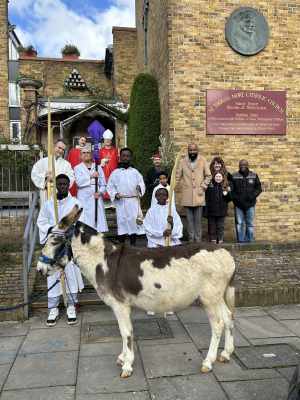A 13-year-old girl who died after contracting sepsis in an NHS hospital probably would have survived if doctors had identified the warning signs and transferred her to intensive care earlier, a coroner has ruled.
Martha Mills, from London, described by her parents as “bright, healthy, enthusiastic”, was the first ever child to die at King’s College hospital (KCH) with a pancreatic injury of the type she sustained in a fall from her bike on an off-road family trail in Wales while on holiday last year. She was transferred to the south London hospital because it is one of three national centres for the care of children with pancreatic trauma.
An inquest at St Pancras coroner’s court, north London, heard that several opportunities were missed to refer Martha to intensive care, which probably would have saved her life.
In an emotional witness statement read through tears, Martha’s mother, Merope, the editor of the Guardian’s Saturday magazine, said that after their daughter contracted an infection on 21 August last year, she and her husband, Paul Laity, raised concerns about Martha’s deteriorating health a number of times but doctors sought to reassure them rather than escalate her care.
She said her daughter’s symptoms initially included a high temperature, diarrhoea and low blood pressure. On 25 August, Martha began to bleed heavily through a tube inserted into the upper arm and through a drainage tube.
Mills said in her statement that she explicitly raised her fears about Martha going into septic shock over the bank holiday weekend.
On 29 August, Martha had high fever, low blood pressure, a racing heart and a rash, which was misdiagnosed by a junior doctor despite Mills voicing her concern that it was caused by sepsis. It was only the next day that Martha was admitted to paediatric intensive care.
“I felt that my anxieties about all of Martha’s symptoms, and especially what they might mean when put together and considered in the round, weren’t given proper acknowledgement,” Mills told the court.
Two KCH consultants involved in Martha’s care said at the inquest that she should have been in a high-dependency bed – where critical care reviews are routine – rather than on the Rays of Sunshine ward for children with liver and other conditions, well before she was eventually transferred to intensive care. Prof Anil Dhawan said she should have been placed in a high-dependency bed as early as 6 August, 11 days after the accident, while Prof Richard Thompson said it should have happened on 21 or 22 August.
Thompson – who was the duty consultant when the rash appeared, though on call at home – nevertheless explained that on 29 August he had decided that escalation was not necessary.
Mills said in her statement that she and Laity were “stunned that no member of the critical care team was even once invited to review Martha on the Rays of Sunshine ward. We know that sepsis is unpredictable and septic shock can come on suddenly, with catastrophic results. So we simply don’t, and never will, understand why a ‘take-no-risks’ approach wasn’t adopted … From the episode of her bleeding, it always seemed evident to us that her situation had become exceptional.”
Dr Akash Deep, a professor of paediatric critical care at KCH, was asked by the family’s lawyer, Tamar Burton, whether Martha would have been admitted to intensive care had he seen her. He replied: “100%.”
Prof William Bernal, who produced a serious incident report on Martha’s death for KCH, said there were at least five occasions when she should have had a critical care review.
He wrote that Martha’s chances of survival “would have been greatly increased” if she had been admitted to critical care earlier.
By the time of Martha’s transfer to paediatric intensive care on 30 August she had septic shock and was “profoundly unwell … and failed to respond to interventions”.
In Bernal’s report, he also commented on the relationship between the consultants looking after Martha and critical care, stating: “It was reported that referrals were made more often and with a lower trigger threshold, and that relations were easier, with the general rather than liver paediatric services. The perception reported was that the liver ward team sometimes questioned the value of review.”
The inquest heard that KCH was making changes in the wake of Martha’s death, including improving diagnostics and taking account of parents’ views.
The senior coroner Mary Hassell, whose verdict was based on the balance of probabilities, said Martha had been “incredibly unlucky” to strike the bike’s handlebars in the way she did, but it was an injury many other children had suffered without the same fatal consequences. “She was not transferred to intensive care as she should have been,” Hassell said. “All the evidence I have heard boils down to that. I find the likelihood is if she’d been transferred to intensive care, she would have survived.”
Martha’s parents said she was “a fun, singular, very intelligent girl, who had such an appetite for life and all its opportunities. She was growing up to be a strong, remarkable woman … We have now had confirmed what we always knew – that this was a preventable death. Martha’s future has been stolen. We feel outraged on her behalf.”
Prof Nicola Ranger, the chief nurse at KCH NHS trust, said: “We would like to extend our deepest sympathies once again to Martha’s family for their loss. We accept the coroner’s findings, and on behalf of the trust, I would like to apologise for the failure to recognise Martha’s deteriorating condition earlier, which led to delays in providing appropriate treatment. We are committed to delivering further improvements to the care we provide to patients at King’s.”
https://www.theguardian.com/society/2022/mar/04/girl-13-likely-to-have-survived-if-moved-to-intensive-care-coroner-rules




